A slow tire leak is more than just a nuisance. A leak can lead to low tire pressure. Not to mention, prolonged running on an underinflated tire can lead to more extensive tire damage or even cause a dangerous blowout.
If you’re experiencing a slow leak, here are some things to look for:A tire puncture: It is a common misconception that a puncture will cause the tire to immediately go flat. However, in many cases the object that caused the puncture remains lodged in the tire and prevents the air from leaking out quickly. As with all tire leaks, it is important not to ignore a puncture. Eventually to object will either wear down and/or work its way out of the tire. For more on this read our article How to Repair a Tire with a Safe, Permanent Fix.
Wheel damage: Another common cause for slow tire leaks is damage to the area where the tire bead meets the rim. This type of damage is typically cause by the driver hitting the curb, taking a speed bump at high speeds OR those dreaded potholes! The impact deforms the wheel’s metal surface which may cause the tire to pull away from the mounting surface of the wheel.
Valve stem damage: The third most common cause for slow tire leaks is worn out or damaged valve stems. Time, use and exposure to elements can cause your valve stems to wear out and cause leaks.
Diagnosing your tire leak:
If your vehicle is equipped with TPMS, you will know right away if you have a leak. If the sensor light on your dashboard goes off, you inflate all the tires back to proper pressure and the light goes back on a few days later – you likely have a leak. If your vehicle does not have TPMS, its important to check your tire pressure regularly.
Once you’ve identified that you have a leak, use TECH Chek to locate the source of your leak. Simply spray the product all around the tire. Where the surface of the tire begins to bubble is likely the source of your leak.
Where the surface of the tire begins to bubble is likely the source of your leak.
It’s important to have your tire diagnosed by a professionally trained tire shop or mobile tire repair service as soon as possible. In the case of a puncture, you may want to use a tire repair kit to keep your tire properly inflated until you can have it serviced. The leak should then be permanently fixed using a proper tire repair consisting of a cured rubber stem and repair unit.
If the leak is caused by a damaged valve, a trained tire technician can typically replace the valve at a minimal cost. In some cases, however, the tire may need replaced.
If the leak is caused by a damaged wheel, a tire technician may be able to reseat and seal the tire using a bead sealer. However, if the damage to the wheel is significant, unfortunately that means you may need to replace the wheel itself.
To read more about the types of damage that can and cannot be repaired, click here!
So, you have a flat tire or one that’s leaking air. It’s not the end of the world. Luckily there are safe and cost-effective ways to properly repair most tire punctures. The purpose of this article is to show you the difference between a safe, permanent repair and a temporary string, plug or patch repair.
It’s not the end of the world. Luckily there are safe and cost-effective ways to properly repair most tire punctures. The purpose of this article is to show you the difference between a safe, permanent repair and a temporary string, plug or patch repair.
According to the National Highway Traffic Safety Administration (NHSTA) and the Tire Industry Association (TIA), the only method to properly repair a tire puncture is to fill the injury with a repair stem and back the stem with a repair patch. This is commonly known as a combination repair or a patch/plug repair.
Patch/plug repairs are most often performed using a one-piece repair unit that combines the repair stem and cap (or patch) into one unit. However, special circumstances may require the use of a two-piece combination repair (ex. If the angle of the puncture exceeds 35 degrees). The repair is then permanently bonded to the inside of tire and through the injury channel using a cold, chemical vulcanizing process. The repair essentially becomes part of the tire, creating an air-tight seal that keeps air in and moisture and contaminants out (more on this procedure below).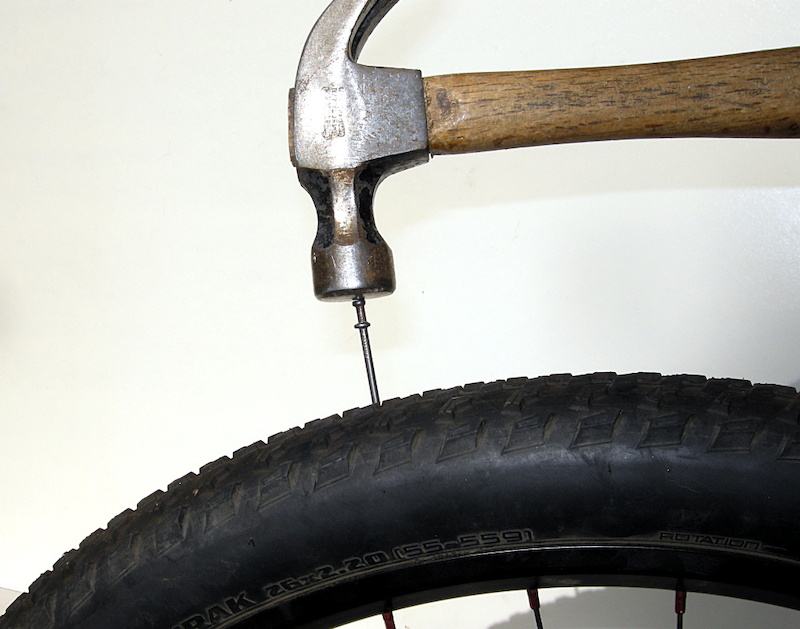
Emergency roadside plug repairs are NOT intended to be a permanent tire repair. Plugs and string repairs are designed to get you back up and rolling long enough to get home or to the nearest service center to perform a proper tire repair.
The common misconception with plug and string repairs is that because they hold air, they are safe to use. While it is true that many plug repairs do a great job of keeping air in the tire, that’s only part of the equation. Because they’re not completely sealing the injury, plug repairs may allow air and moisture to penetrate the body of the tire. Over time, this could lead to a dangerous (or even deadly) blowout.
A Patch-Only Tire Repair Leaves Your Tire Susceptible to DamageA tire repair that uses only a patch is also NOT considered proper or safe. A properly installed patch will do a great job of allowing the tire to hold air. However, similarly to the plug-only repair, the patch does not fill the injury channel.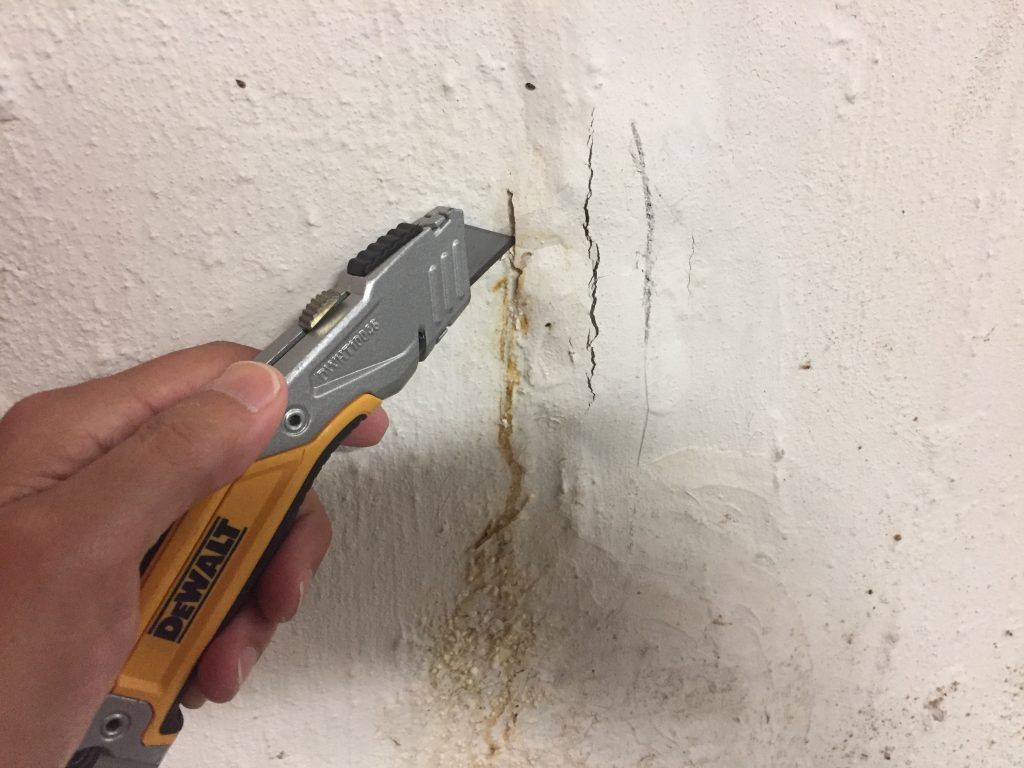 Therefore, air and moisture could seep into the tire from the tread surface and eventually damage the tire.
Therefore, air and moisture could seep into the tire from the tread surface and eventually damage the tire.
Only a proper patch/plug repair completely seals the puncture from inside the tire and through the entire injury channel. There are a few extra steps necessary to perform a proper tire repair in accordance with industry guidelines. We’ve developed a simple acronym to help organize and remember the steps: R.E.P.A.I.R.
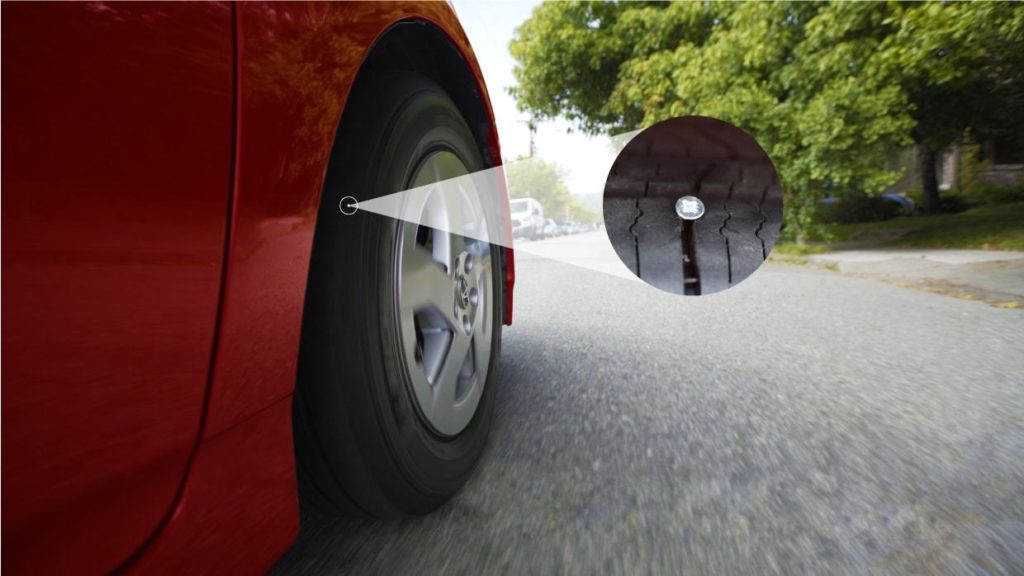 First, the injury is drilled out using a carbide cutter to strip away and damaged cords or belts. Next, the inner liner is cleaned and buffed to a slightly rough texture. This also helps maximize adhesion of the patch/plug repair.
First, the injury is drilled out using a carbide cutter to strip away and damaged cords or belts. Next, the inner liner is cleaned and buffed to a slightly rough texture. This also helps maximize adhesion of the patch/plug repair.There are a number of factors that may determine whether or not your tire is safe to repair. These factors fall into three main categories:
These factors fall into three main categories:
The occasional flat or leaky tire is an unavoidable part of life. But, taking shortcuts to repair it can be dangerous to you and your passengers.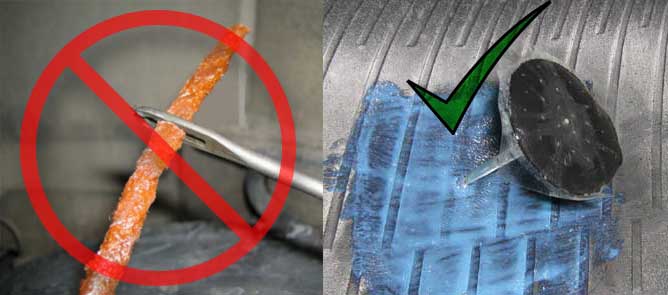 Take the time and do the research to do the job right and/or find a reputable tire repair shop trained in proper tire repair procedure.
Take the time and do the research to do the job right and/or find a reputable tire repair shop trained in proper tire repair procedure.
Slow leaks can cause your tire to lose air and eventually fail. There are several ways to fix a slow tire leak. You can use a piston, a patch kit, or an air compressor to fix the leak.
To fix a slow leak with a piston:
To fix a slow leak with a fix kit:
 Apply duct tape to the area where you think the air is leaking (usually near the valve stem). Leave enough excess around the edge so that it can be easily removed later if needed (you may need 2-3 applications depending on the size/shape of the area).
Apply duct tape to the area where you think the air is leaking (usually near the valve stem). Leave enough excess around the edge so that it can be easily removed later if needed (you may need 2-3 applications depending on the size/shape of the area). There are several different ways to fix a slow leak in a tire. One way is to use a patch kit. The patch kit comes with glue, sealant, and sometimes sandpaper. paper to smooth out any bumps or ridges on the tire surface. Finally, you can apply pressure with your hands to make sure the sealant is firmly on the tire surface. Another way to fix a slow leak in a tire is to replace the entire tire. This is usually only necessary if if the leak is severe or continues for a long time. In most cases, the problem is solved by replacing just one tire. If none of these methods work, you may need to take the car to an auto repair shop for further inspection and repair.
There are a few things you can do to fix a slow tire leak.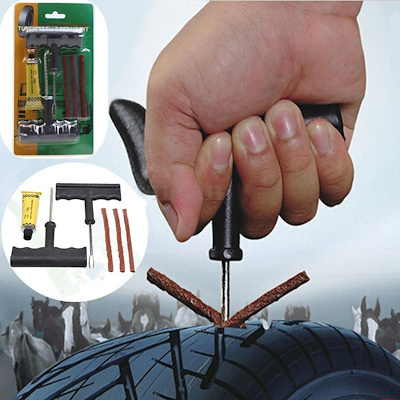 The first thing to do is to check the air pressure in the tire. You can also try using a plunger to press down on the sidewall of the tire and see if the fluid comes out. If none of these methods work, you may need to replace the tire.
The first thing to do is to check the air pressure in the tire. You can also try using a plunger to press down on the sidewall of the tire and see if the fluid comes out. If none of these methods work, you may need to replace the tire.
There are several ways to fix a slow leak in a tire. You can try a patch kit, inflate the tire with an air compressor, or replace the tire.
If you are experiencing a slow leak on one of your tires, it is important to take action as soon as possible. power when you go through small bumps or puddles, it might be time to change your tire.
Here are some tips for fixing a slow tire leak:
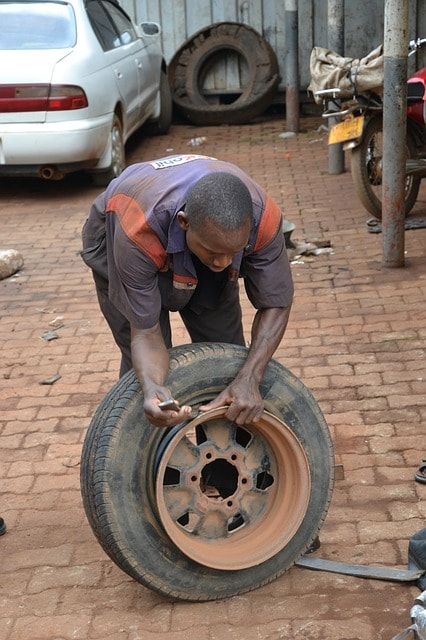 This will help increase the pressure inside the tire and quickly fix the leak. Make sure you have everything you need before starting this process, including an air compressor and a rubber hose!
This will help increase the pressure inside the tire and quickly fix the leak. Make sure you have everything you need before starting this process, including an air compressor and a rubber hose! There are several things you can do to try and fix a slow tire leak. First, check the air pressure in the tire. or debris that may be blocking the airflow. Finally, if all these measures fail to resolve the issue, you may need to replace the tire.
There are a few things that can cause a tire to slowly leak air. One of the most common causes is a slow puncture. As the tire starts to deflate, the air inside can escape through small holes in the rubber. tire, which can make driving difficult and even dangerous. solve the problem. First, check for signs of a slow puncture. If you see signs that someone has damaged your tire or that something is blocking one of the small air vents, you need to replace the tire as soon as possible. In addition, make sure your tires are properly inflated and rotated regularly. If these measures do not solve the problem, you may need to completely replace the tires.
tire, which can make driving difficult and even dangerous. solve the problem. First, check for signs of a slow puncture. If you see signs that someone has damaged your tire or that something is blocking one of the small air vents, you need to replace the tire as soon as possible. In addition, make sure your tires are properly inflated and rotated regularly. If these measures do not solve the problem, you may need to completely replace the tires.
There is no definitive answer to this question as it all depends on your driving habits and the type of tires you use. However, checking for leaks every two weeks is a good rule of thumb. To check for leaks, first remove the tire from the wheel and put on a flat surface. Look for bubbles or fluid leaking from the valve stem or other puncture points. If there is a leak, you will need to repair it before continuing to work on the disc. There are several ways to do this, depending on the size and type of leak. For small leaks, a sealant such as silicone or petroleum jelly can be used. Large leaks may require a complete tire replacement.
For small leaks, a sealant such as silicone or petroleum jelly can be used. Large leaks may require a complete tire replacement.
If the tire is properly inflated, you can drive up to 80 miles before it becomes a safety hazard. tire pressure will drop below the recommended level, making the tire much more susceptible to blowout. In extreme cases, a blown or flat tire can lead to an accident. It is therefore important that you take care of your tires and replace them when they begin to show signs of wear or weakness.
Yes, all tires leak air slowly over time. The most common cause of a slow leak is a small puncture in the tire that allows air to escape. Over time, this small hole can grow larger and eventually lead to a complete rupture of the tire. There are a few things that you can do to fix a slow leak:
 Low tire pressure can cause air to escape from tiny punctures in the tire, resulting in a slow leak.
Low tire pressure can cause air to escape from tiny punctures in the tire, resulting in a slow leak. A slow leak tire is a tire with a small hole through which air escapes.
There is no definitive answer to this question, as the best place to repair a tire with a slow leak depends on the specific situation. However, some general tips that can be helpful in fixing a slow leak include using sealant and checking tires for flat tires.
If you notice a slow leak from a tire, it's important to take action as soon as possible to prevent further damage. There are many different ways to fix a slow leak in a tire, so it's important to find the method that works best for you. Some common methods include the use of sealants or patches, air pressure changes and tire replacement.
There are many different ways to fix a slow leak in a tire, so it's important to find the method that works best for you. Some common methods include the use of sealants or patches, air pressure changes and tire replacement.
It is also important to keep an eye on flat tires to determine if there is a more serious problem with your vehicle that needs attention. .
There is no set time for how long it takes to fix a slow leak in a tire. The repair process will depend on the severity of the leak, tire size and type, and the tools and skills available. Some factors that can affect how long it takes to fix a slow tire leak, include: whether the tire is being used;
tire age;
how badly the leak damaged the tire;
is there debris inside the tire; and
experienced tire repairman. In general, however, most slow leaks can be repaired within a few hours if necessary. Slow leaks are usually caused by air escaping from one or more of your tire valves. This air can cause that your vehicle will lose power and make a loud noise while driving. If you notice that one or more of your tires are rapidly losing air, it is important to take action as soon as possible. Here are some tips to fix a slow leak: Check all four tires for signs of leaks, including on each valve stem. One of the common mistakes people make when trying to fix a slow leak is that they assume that only one particular tire is causing problems. It is important to check all four tires for signs of leakage, including on each valve stem, to determine which one may be slowly letting air out. If you find signs that one particular tire is slowly leaking air, try replacing that tire before doing any other repairs. Remove any obstruction to air flow in and out of your tires, including pieces of metal, plastic bags, etc.
This air can cause that your vehicle will lose power and make a loud noise while driving. If you notice that one or more of your tires are rapidly losing air, it is important to take action as soon as possible. Here are some tips to fix a slow leak: Check all four tires for signs of leaks, including on each valve stem. One of the common mistakes people make when trying to fix a slow leak is that they assume that only one particular tire is causing problems. It is important to check all four tires for signs of leakage, including on each valve stem, to determine which one may be slowly letting air out. If you find signs that one particular tire is slowly leaking air, try replacing that tire before doing any other repairs. Remove any obstruction to air flow in and out of your tires, including pieces of metal, plastic bags, etc.
There are several things that can cause a slow leak in a tire. A slow leak can be caused by a hole in the tire, air bubbles, or even a crack in the rubber. Here are some tips to fix a slow leak: 1. Check for holes and cracks in the tire. If there is an obvious hole or crack, fix it as soon as possible. This will prevent air leakage and cause the tire to run even slower. .3. Remove air bubbles with a pump or syringe. Be careful not to puncture the tire! 4. Replace any damaged tires as soon as possible to avoid further damage and loss of speed.
Here are some tips to fix a slow leak: 1. Check for holes and cracks in the tire. If there is an obvious hole or crack, fix it as soon as possible. This will prevent air leakage and cause the tire to run even slower. .3. Remove air bubbles with a pump or syringe. Be careful not to puncture the tire! 4. Replace any damaged tires as soon as possible to avoid further damage and loss of speed.
If you've ever had problems with your car losing power when driving on winding roads, then you know how important it is to properly inflate your tires so that you don't find yourself in a difficult situation somewhere far from home, which can easily happen if one of your tires will deflate while you're driving...
Fortunately, there are ways to check if one of your tires is slowly deflating without going out and measuring it yourself - all you need is some simple equipment and some knowledge on how it works...
There is no easy answer when it comes to whether it is safe to drive on a tire with a slow leak. The most important thing to remember is that anytime you are driving, even if the tires look to be in good condition, there is always chance of an accident. If you have a slow leak, it is important to take action and fix the problem as soon as possible. Here are some tips to fix a slow leak:
The most important thing to remember is that anytime you are driving, even if the tires look to be in good condition, there is always chance of an accident. If you have a slow leak, it is important to take action and fix the problem as soon as possible. Here are some tips to fix a slow leak:

If you drive regularly, it is important to check your tires for leaks. Leaks can cause your vehicle to lose gas and even damage a tire. inside the tire onto the valve stem and see if any fluid or debris is leaking out of it. Finally, use a pressure gauge to measure how much air is still in the tire.
There are several signs that your tire may be leaking slowly. One sign is that you notice a decrease in the amount of air your tire can hold, or if you see fluid leaking from the tire. Another sign is trouble starting vehicle due to low tire pressure. If any of these signs are present, it is important to take action and repair the leak as soon as possible. There are several ways to fix a slow tire leak. You can try using an air pump to inflate the tire until it reaches its maximum pressure, or you can replace the entire tire with a new one. If any of these solutions don't work, you will need to take What to do next and repair the leak yourself. In any case, repairing a slow tire leak is important for your vehicle to continue driving safely.
In any case, repairing a slow tire leak is important for your vehicle to continue driving safely.
There are a few things you can do to prevent your tires from leaking slowly. First, make sure your tires are properly inflated. Excessive tire pressure can cause them to burst, resulting in slow leaks. Second, regularly monitor your tire pressure and adjust as needed. Third, inspect your tires for signs of damage or wear and replace them if necessary. Finally, use a leak detection system to help identify and repair any slow tire leaks before they become serious problems.
If you have a slowly leaking tire, there are a few things you can do to fix the problem. First, check that the air pressure in the tire is correct. If it is not, you may need to add air to the tire. Next, check for cuts or tears on the tire casing. If there are any, you will need to repair them before continuing. Finally, inspect the area around the tire for any objects that may be obstructing airflow.